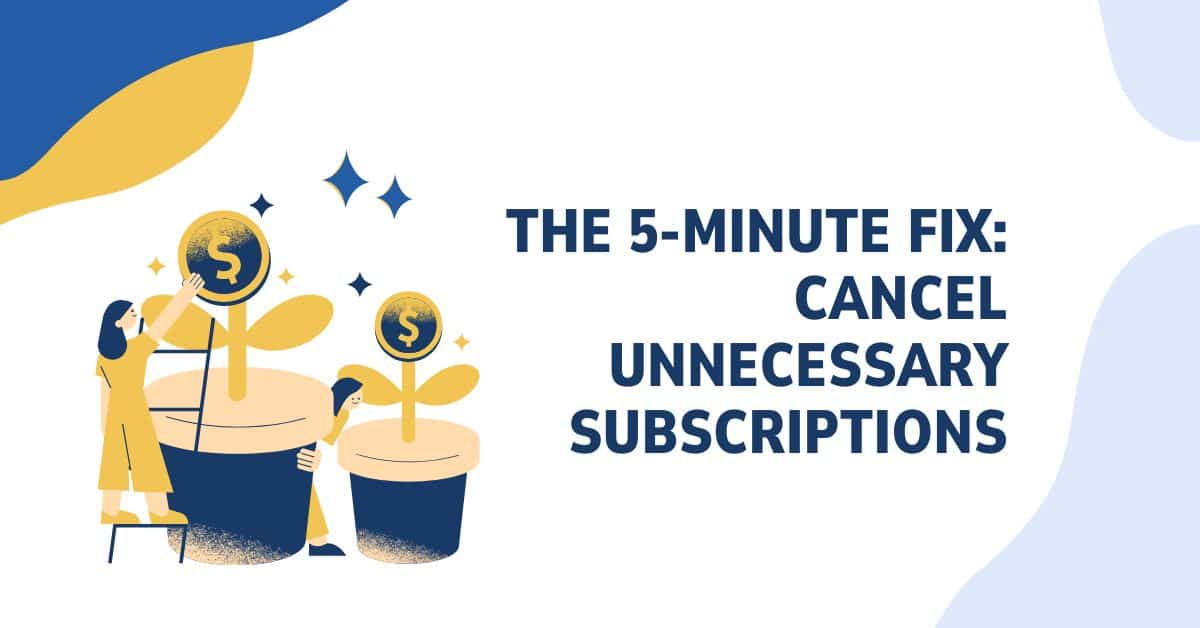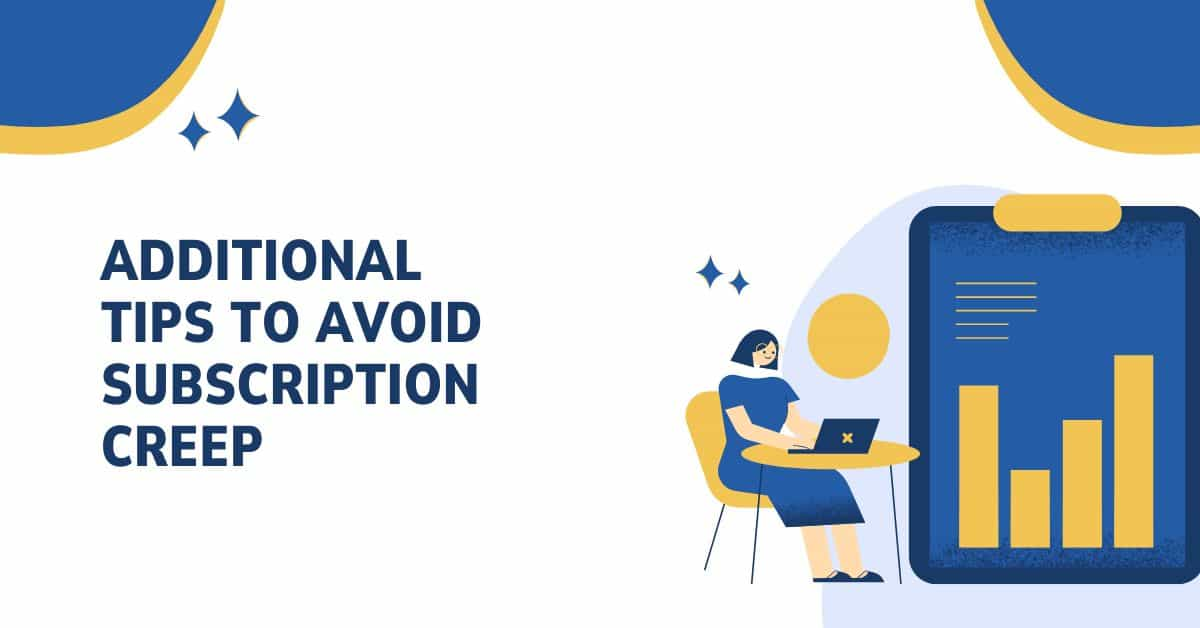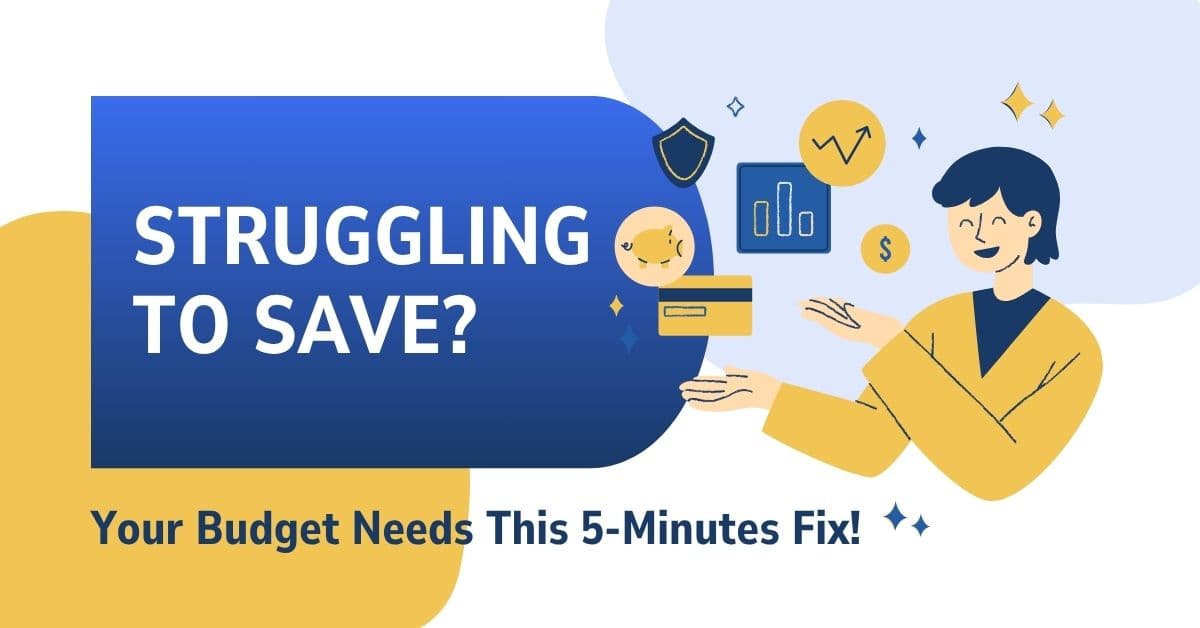Struggling to Save? Is it difficult for you to save money every month? Do you feel as though you are losing control of your spending but are unable to identify where your money is going? The offender may be there in front of you: your subscriptions. Subscriptions to streaming services like Netflix and Amazon Prime, gym memberships, software tools, and even meal delivery kits are becoming more and more popular in India’s digital age. Your bank account may be steadily depleted by these ongoing fees, frequently without your knowledge.
According to studies, many Indians pay hundreds of rupees a month for subscriptions, with the average cost of an OTT platform alone being ₹295. That comes to around ₹900 a month, or more than ₹10,000 a year, if you have subscriptions to three platforms [GoDaddy Resources]. These expenses can undermine your savings objectives if you’re a recent college graduate, a new student, or anyone else on a limited budget. The good news? Reviewing and terminating pointless memberships is a quick 5-minute repair that can result in big financial savings. With two simple ways to save money quickly and advice on how to avoid overspending in the future, this article helps you take charge of your finances in 2025.
The Cost of Subscription Creep
Although subscriptions are practical, they can subtly deplete your funds. These recurrent fees, sometimes referred to as “subscription creep,” mount up when you join up for services and neglect to cancel them, particularly following free trials. Research demonstrates the scope of the issue:
- Indians spend an average of ₹295 a month on OTT platforms, according to a 2021 Pixights analysis. Sixty-two percent of them subscribe to three or more platforms, for a monthly total of almost ₹900 [GoDaddy Resources].
- According to a 2024 CNET survey, US consumers spend about $200 a year (₹16,700) on unused subscriptions; this suggests that India, where digital penetration is rapidly increasing, is following suit [CNET].
- Similar to an underused gym membership or streaming service, a single ₹300 monthly subscription costs ₹3,600 annually. Eliminating two of these subscriptions might result in an annual savings of ₹7,200, which would be sufficient for a small investment or an emergency fund contribution.
These savings are substantial for freshers making between ₹20,000 and ₹50,000 per month, freeing up money for investments like mutual funds, debt reduction, or necessities. Finding and removing these hidden costs in five minutes is crucial.
The 5-Minute Fix: Cancel Unnecessary Subscriptions
Reviewing and cancelling subscriptions that you no longer require or use is the quickest approach to increase your savings. You have two options for doing this: manually reviewing your financial statements or using a subscription management program. Both approaches are perfect for busy professionals or students because they are easy to learn and take only a few minutes to finish.

Option 1: Make Use of an App for Subscription Management
Through automatic detection of recurring transactions and cancellation assistance, subscription management apps simplify the procedure. Apps like Fleek, Money View, and Walnut are well-liked in India because of their safe data processing and user-friendly interfaces. These apps list your subscriptions, link to your bank accounts or UPI transactions, and frequently offer services or cancellation instructions.
Steps to use an app:
- Download a Reputable App Here: Select apps from the App Store or Google Play, such as [Money View] or [Fleek]([invalid url, do not cite]).
- Link Your Accounts: Make sure the app employs bank-level encryption when you link your credit cards, bank accounts, or UPI IDs.
- Review Subscriptions: The app records regular charges, such ₹500 for a gym subscription or ₹299 for Netflix, by scanning transactions.
- Decide What to Cancel: Assess each subscription to determine what should be cancelled. You might want to discontinue a service if you haven’t used it in a month.
- Cancel Subscriptions: Visit the service provider’s website or follow the app’s instructions to cancel directly (some applications take care of cancellations for you).
- Verify Cancellations: Verify that charges have ceased by looking at your subsequent bank statement.
Pros:
- Saves time through process automation.
- Finds subscriptions that you would overlook by hand.
- Frequently offers cancellation advice.
Cons:
- Requires the exchange of financial information (see to privacy policies).
- Monthly premium features can range from ₹100 to ₹500.
For example, Priya, a 25-year-old fresher to Bengaluru, uses Fleek to find a ₹200 music app that she hardly ever uses and a ₹299 Netflix subscription. She transfers the ₹499 she saves each month, or ₹5,988 yearly, from cancelling both to a savings account.
Option 2: Manual Review
A manual evaluation offers you complete control and is equally effective if you would rather not disclose financial data. Using this technique, you can identify recurrent charges and remove ones that aren’t needed by looking at your bank or UPI statements.
Steps for Manual Review:
- Obtain Financial Statements: Use apps such as [HDFC Bank]or [Paytm] to see your bank statements, credit card bills, or UPI transaction history for the previous two to three months.
- Find Recurring Charges: Keep an eye out for consistent payments, such as ₹299 per month or ₹1,999 per year. Software tools, gym memberships, and OTT platforms are examples of common subscriptions.
- List Subscriptions: List all of your subscriptions, their prices, and how often you use them (for example, ₹299/month for Amazon Prime).
- Evaluate the Necessity: “Do I use this on a regular basis?” Is there a less expensive option? Mark it for cancellation if not.
- Cancel Subscriptions: To cancel, go to the provider’s website (like Netflix.com) or get in touch with customer support. Comply with their instructions, which can include contacting a hotline or checking in.
- Check for Cancellations: Verify that charges have ceased by looking at your subsequent statement.
Pros:
- No need to share financial information.
- Full control of the procedure.
- Implementation is free.
Cons:
- For several subscriptions, it can take a little more than five minutes.
- Tracking and cancelling need manual effort.
For example, Arjun, a 22-year-old Delhi student, discovers a ₹500 monthly gym subscription that he hasn’t used in three months when he examines his UPI transactions.
- App for Subscription (Time Needed: ~5 minutes): Fast and automated solutions are provided by expense tracking apps such as ET Money, Money View, and Walnut. They classify your expenditure in real time by syncing with your credit cards and bank accounts. These apps save time and are easy to use, but they could ask for financial information to be shared and charge for premium services.
- Manual Review: It takes five to ten minutes. The best choice is to manually inspect your bank statements if you want complete control and privacy. This approach is entering your weekly or daily spending into a notes app or spreadsheet. It provides you full insight into where your money is going and does away with the necessity for data sharing, but it takes a little longer.
Additional Tips to Avoid Subscription Creep
Adopt these practices to stay inside your budget and prevent future overspending:

- Create Free Trial Reminders: To prevent auto-charges, use the calendar on your phone to create reminders one to two days prior to the conclusion of a free trial.
- Use a Single Payment Method: To make tracking simpler, associate subscriptions with a single credit card or UPI ID for example, [Paytm].
- Review Quarterly: To find new or neglected subscriptions, look at bank statements every three months.
- Examine Other Options: To cut expenses, move to shared or free services (such as family plans for OTT platforms).
- Choose Annual Plans: whether you maintain a membership, see whether there are any savings for yearly payments (for example, ₹1,999/year vs. ₹299/month for Amazon Prime).
Frequently Asked Questions (FAQs)
1. Why are subscriptions expensive for me?
Recurring fees, such as ₹295 a month for OTT platforms, can soon mount up, particularly if they are not used, and they take money away from investments or savings [GoDaddy Resources].
2. When I cancel my subscriptions, how much can I save?
One ₹300 monthly membership can be cancelled to save ₹3,600 annually; two can be cancelled to save ₹7,200, which can be used for investments or an emergency fund [CNET].
3. Are applications for managing subscriptions secure?
Bank-level encryption is used by reputable apps like Fleek or Money View, but before connecting accounts, always check their privacy policies [Fleek].
4. What happens if I don’t make the five minutes?
The savings are worth the five to ten minutes it may take to do manual reviews. If time is of the essence, use applications for quicker outcomes.
5. How can I stay clear of subscription traps?
To identify needless costs early, set trial reminders, stick to a single payment method, and routinely check your statements [Consumer Reports].
An Example from Real Life
Situation: Neha, a 24-year-old fresher to Mumbai who makes ₹30,000 a month, finds it difficult to save money because of the high cost of living.
- Neha discovers she is paying ₹299 for Netflix, ₹200 for a music app, and ₹500 for an unused gym membership after she installs [Money View]. She saves ₹700 a month (₹8,400 a year) by cancelling her gym subscription and music app. She sends reminders for free trials and confirms cancellations on her subsequent UPI statement. Neha directs the savings through [Groww] to a ₹500 monthly SIP.
- Result: Neha uses a 5-minute fix to start her investing adventure, save ₹8,400 a year, and accumulate a ₹10,000 emergency fund in 15 months.
Conclusion
Having trouble saving? Reviewing your subscriptions for five minutes can change your spending. Cancelling unwanted subscriptions can save hundreds or thousands of rupees a year, whether you do it manually by looking at your bank statements or with apps like [Fleek]. You can either start a little investment with [Groww] or transfer these savings to a high-yield savings account with [HDFC Bank] or [SBI]. Take five minutes today to go over your subscriptions, avoid pitfalls in the future, and get individualised budgeting advice from a financial counsellor. Take charge of your financial future by beginning to save now!
Disclaimer: Individual financial results may differ. Prior to creating a budget, seek advice from a skilled financial counsellor. This article is only meant to be instructive.
Aditya Infotech IPO GMP in Focus – Budget Like a Pro Today!
IEX Share Alert – Fix Your Budget Today!
CoinDCX Hack: How to Budget & Protect Your Crypto

I’m Rashid Ali, a personal finance blogger and content creator at SavingSecret.in, helping young adults in India master saving, investing, and tax planning. I simplify money topics like budgeting, IPO updates, and stock market tips to make finance easy and actionable. Follow me for smart money moves that actually work!
